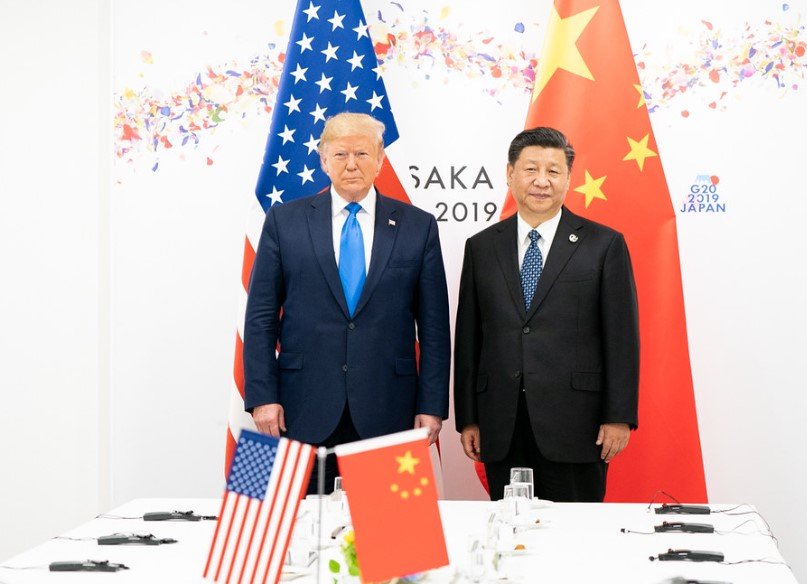The White House is exploring major tariff cuts on Chinese goods, signaling a potential pivot in U.S.-China trade relations as both sides seek common ground.
The plan? Scale back punishing tariffs from record highs of 245% to somewhere between 50% and 65%. It’s not a done deal yet—Trump hasn’t made the final call. But momentum is building, and markets are watching every move.
From Maximum Pressure to Tactical Flexibility
When Trump returned to the Oval Office in January, he wasted no time jacking up tariffs on Chinese imports. It was all about leverage. Beijing got the message.
In just three months, tariff rates climbed to staggering levels—some categories hit a brutal 245%. That kind of economic heat doesn’t go unnoticed. Supply chains got squeezed. Exporters panicked. Lobbyists flooded Capitol Hill.
And now? Sources close to the administration say Washington is shifting gears. Reuters reported Wednesday that the White House is mulling a fresh approach—one that lowers tariffs significantly but keeps strategic pressure intact.
Trump hasn’t signed off yet, but the language has softened. “It won’t be anywhere near that,” he said this week, hinting at major changes to come.

A Tiered Approach: Strategic, Not Surrender
Nobody’s calling this a climbdown. Not Trump. Not his advisers. Instead, think of it as a recalibration.
Details are still fuzzy, but one proposal gaining traction involves a tiered tariff system. That means:
-
Sensitive items like semiconductors or defense-related tech would still face sky-high rates—possibly over 100%.
-
Consumer goods and non-sensitive imports could see sharp cuts, down to 50–65%.
The strategy here is clear. Punish where it matters most. Show some leniency elsewhere. It’s part carrot, part stick.
One senior official reportedly told the Wall Street Journal that the administration wants to “incentivize cooperation while protecting U.S. strategic interests.” That’s the balancing act—play tough, but keep negotiations alive.
Markets React Fast and Furious
Wall Street wasted no time in reacting.
The S&P 500 popped 3.3% mid-morning Wednesday, hitting a two-week high. Traders love certainty—or at least the idea of it. And nothing says “relief rally” like rumors of a trade thaw.
It wasn’t just the S&P. Tech stocks jumped. Semiconductor firms, many of which depend on China for parts or manufacturing, led the charge. Even Asian markets showed signs of optimism overnight.
That said, we’ve seen this movie before. Trade headlines have whipsawed markets for years. One tweet can undo a week’s worth of gains.
But for now, investors are hopeful. Trump’s comments Tuesday night poured a bit of oil on turbulent waters. “It won’t be that high,” he said of tariffs. “It won’t be anywhere near that.”
Behind the Scenes: Politics, Pressure, and Beijing
There’s more to this than spreadsheets and market charts. Politics is the elephant in the room.
Trump’s base has long cheered his hardline China stance. But with an election ahead and inflation biting into consumer confidence, the White House may be feeling the squeeze.
Cutting tariffs on everyday items could ease pressure on American wallets—and win back some middle-class support. At the same time, Beijing has been looking for signs Washington might be ready to deal.
According to reports, the Chinese delegation has already floated concessions of its own, including:
-
Expanded purchases of U.S. agricultural goods.
-
Tighter regulations on Chinese firms operating abroad.
-
Promises to avoid currency manipulation.
Still, trust is thin on both sides. Any deal would take months to finalize—and one wrong move could blow the whole thing up.
Tariff History: From Bush to Biden to Trump Again
To make sense of today’s tariff tangle, it helps to look back. Here’s a quick table showing how tariffs have moved under recent U.S. presidents:
| President | Average Tariff on China Goods | Policy Highlight |
|---|---|---|
| George W. Bush | ~2.5% | Focused on WTO integration |
| Barack Obama | ~3.2% | Targeted tire tariffs in 2009 |
| Donald Trump (1st Term) | Peaked at ~21% | Trade war escalation, Section 301 tariffs |
| Joe Biden | Maintained Trump-era rates | Strategic review, limited rollbacks |
| Donald Trump (2025) | Raised up to 245% | Tariff spikes early in 2nd term |
This isn’t just about China—it’s about who controls the narrative.
Trump wants to look tough, but also reasonable. Cutting tariffs too much could be seen as backing down. Leaving them too high could sink trade talks. It’s a tightrope walk.
What’s Next? A Waiting Game
Negotiators are talking. Proposals are on the table. The stock market is up. But there’s no final deal.
White House officials have signaled that any tariff cut would come as part of a broader agreement—not a giveaway. Trump himself has kept things vague on purpose, a tactic he’s used before to keep allies and adversaries guessing.
For now, it’s wait and watch. But the signs point to movement. After months of hardball, both Washington and Beijing may finally be ready to blink.
